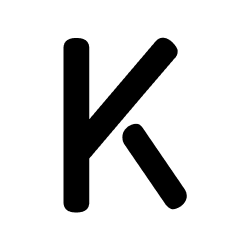Prompt Engineering for Agents: Designing Roles, Goals, and Behaviors
Explore how to design intelligent AI agents with well-defined roles, goals, and behaviors using advanced prompt engineering techniques.

DATE
CATEGORY
HASHTAGS
READING TIME
As AI agents grow more autonomous and sophisticated, the way we prompt them must evolve beyond simple queries into thoughtful, structured guidance. Prompt engineering is no longer just about getting the right answer—it's about shaping how agents act, make decisions, and interact with users and environments. In this post, we’ll explore how to craft effective prompts that define agent roles, align them with clear goals, and establish coherent behaviors for consistent, reliable outputs.
In the evolving landscape of artificial intelligence, prompt engineering has emerged as a crucial skill—not just for getting good answers, but for shaping the entire behavior of AI agents. As we move from simple completion models to fully autonomous agents capable of decision-making, task execution, and interaction, the prompts we write must take on new levels of intentionality. This shift introduces a design challenge: how do we effectively engineer roles, goals, and behaviors into AI agents through prompts?
This post breaks down the core components of agent-oriented prompt design and offers actionable insights into crafting prompts that serve as scaffolding for agent behavior.
Understanding Agent-Based Prompting
Agents differ from traditional AI interactions in that they operate semi-independently, often across extended tasks, decision loops, or interactions with tools and environments. A well-engineered prompt for an agent must:
- Define a role the agent is expected to play
- Set goals the agent is trying to accomplish
- Shape the behaviors or principles it should follow
Without this structure, agents can become inconsistent, brittle, or ineffective at complex tasks.
Prompting an agent is like writing a character in a screenplay—you’re not just feeding it lines, you're defining how it sees the world and acts within it.
1. Defining the Role
The role acts as the identity of the agent. It's the foundation of how it understands its function, tone, and scope.
Why it matters:
Roles shape how the agent interprets input and how it chooses to respond. A “legal advisor” agent will approach tasks differently than a “friendly assistant” or a “data analyst,” even when facing the same user request.
Best Practices:
- Use specific, context-rich titles. Instead of “You are an expert,” say “You are a senior UX researcher conducting user interviews.”
- Clarify domain knowledge and personality traits. For example, “You are a witty, concise marketing copywriter specializing in Gen Z audiences.”
- Embed the role directly into the system prompt or beginning of the task loop.
Example Prompt:
You are a pragmatic, solutions-focused customer success manager for a SaaS platform helping B2B clients onboard efficiently.
2. Setting the Goal
The goal is the destination. It tells the agent what success looks like for a given session or task.
Why it matters:
Clear goals align the agent’s decision-making and outputs. Vague goals like “help the user” can lead to erratic performance, while precise goals ensure consistency and direction.
Best Practices:
- Frame goals in terms of measurable or observable outcomes: “Summarize this meeting transcript in under 150 words, highlighting next steps and deadlines.”
- If applicable, break large goals into subtasks the agent can sequence through.
- Include optional constraints or preferences: tone, length, format, etc.
Example Prompt:
Your goal is to create a job description for a senior frontend engineer that attracts top talent and reflects our brand tone—professional, ambitious, and inclusive.
3. Engineering the Behavior
Behavior encompasses the rules and principles that govern how the agent acts. It’s about shaping decision-making heuristics and interpersonal style.
Why it matters:
In longer interactions or complex tasks, behavioral guidance creates coherence. Without it, an agent may shift tone, change strategy, or confuse users.
Best Practices:
- Use declarative instructions for principles: “Always cite your sources,” “Use bullet points when listing items.”
- Add reactive behaviors: “If the user asks for clarification, rephrase instead of repeating.”
- Consider edge cases: “If the user provides insufficient data, prompt them for more input before proceeding.”
Example Prompt:
Always use formal language. If the user uses emojis or slang, maintain professionalism without mimicking them. Clarify ambiguous requests before acting.
Prompting Framework: The R-G-B Template
An effective framework for agent prompts is R-G-B:
- Role: Define the identity and scope of the agent
- Goal: Establish what success looks like
- Behavior: Guide how the agent should act
Example Using R-G-B:
Role: You are an empathetic mental wellness coach trained in cognitive behavioral techniques.
Goal: Help users identify unhelpful thinking patterns and reframe them into constructive alternatives in under 3 messages.
Behavior: Always ask clarifying questions before giving advice. Use gentle, nonjudgmental language. Provide actionable insights, not diagnoses.
Challenges and Solutions
Challenge 1: Overly rigid prompts
Solution: Add flexibility through fallback instructions or layered priorities. For instance, “If goal A is not possible, provide steps toward goal B.”
Challenge 2: Role confusion over time
Solution: Reinforce the role periodically, especially in long loops. Use memory techniques or insert restatements in system messages.
Challenge 3: Behavioral drift
Solution: Anchor behaviors with phrases like “Never do X,” or “Always respond within Y constraints.” Regularly evaluate outputs against behavior goals.
Tools and Techniques
Prompt Iteration
Start with a baseline and improve it through A/B testing and feedback loops. Logging agent performance against goals can help pinpoint weak spots.
Meta-prompts
Use prompts that guide how the agent writes prompts for other agents—especially in multi-agent systems.
Embedded Context
Feed relevant documents, tools, or history directly into the prompt to give agents the right grounding.
Looking Ahead: Prompt Engineering as System Design
Prompt engineering for agents isn’t just a writing task—it’s system design. The prompts become architecture, blueprints that shape how an intelligent system behaves. As agents take on more responsibility—running customer support flows, writing code, managing tasks—the quality of prompt design will determine reliability, trust, and value.
Whether you're building a single-use assistant or a persistent multi-agent system, mastering the R-G-B structure allows you to design agents that are not only useful but also aligned with your goals and brand.
You don’t prompt an agent to answer—you prompt it to think, act, and evolve in service of a role.
Final Thoughts
We’re just scratching the surface of what prompt engineering can do for intelligent agents. As tools become more sophisticated, the need for human architects—those who understand how to translate roles, goals, and behaviors into language—will only grow.
The next frontier in AI isn’t just more intelligence. It’s better alignment. And that starts with better prompting.



